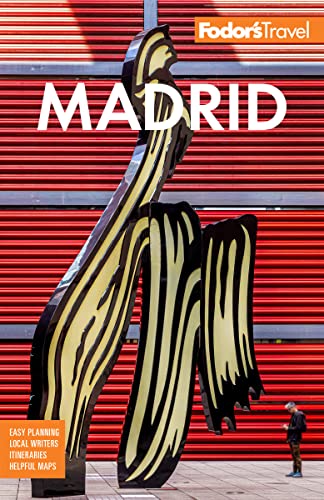A Good Walk: Old Madrid
Stroll around Puerta del Sol for a look at Madrid's oldest buildings, bustling taverns, and quiet cobblestone alleys. Allow about two hours, more if you visit the Palacio Real or Monasterio de la Encarnación.
Begin at the Puerta del Sol, the center of Madrid and a major social and transportation hub, then take Calle Mayor to the Plaza Mayor. Inaugurated in 1620 on the site of a thriving street market, this is Madrid's main square, where you'll find the Casa de la Panadería (Bakery House)—an imposing building with mythological figures painted on its facade, home of the main tourist office.
Exit Plaza Mayor through the arch (Arco de Cuchilleros) and go down the stairs: to the right is Calle Cava de San Miguel—a stretch of colorful taverns going uphill to the posh Mercado de San Miguel and Calle Mayor; to the left is Calle de Cuchilleros (Knife Makers' Street), which leads to the Plaza de Puerta Cerrada, or "Closed Gate," named for the city gate that once stood here. The mural up to your right reads Fui sobre agua edificada; mis muros de fuego son ("I was built on water; my walls are made of fire"), a reference to the city's origins as a fortress with abundant springs and its ramparts, made of spark-making flint. Cross the street to Calle Cava Baja, packed with taverns and restaurants. At Plaza del Humilladero, walk past Plaza de San Andrés and take Costanilla de San Andrés from Plaza Puerta de Moros, down to Plaza de la Paja. The Capilla del Obispo (Bishop's Chapel), on the south edge of the plaza, completed in 1535, houses one of Spain's most magnificent Renaissance altarpieces. Look right on narrow Calle Príncipe Anglona—at its end you'll see a tall redbrick Mudejar tower, the only original element belonging to San Pedro el Real (St. Peter the Royal), one of Madrid's oldest churches.
Cross Calle Segovia to Plaza de la Cruz Verde, take the stairs (Calle del Rollo) to your right, go straight to Calle Cordón, then turn left. Walk up the stairs, and cross the Plaza del Cordón and Calle Sacramento to get to Plaza de la Villa; noteworthy buildings here are (west) the former city hall main office, finished in 1692; (east) the Casa and Torre de los Lujanes, the oldest civil building in Madrid, dating to the mid-15th century; and (south) the Casa Cisneros, from the 16th century. Turn left on Calle Mayor and walk to Calle San Nicolás; on the corner is the Palacio del Duque de Uceda, a residential building from the 17th century now used as military headquarters. Turn right onto Calle San Nicolás (San Nicolás de los Servitas is Madrid's oldest standing church, with a Mudejar tower dating to the 17th century) and walk to Plaza de Ramales, where you'll find a display of a ruined section of the foundation of the medieval Iglesia de San Juan, demolished in the 19th century. Take Calle San Nicolas until it becomes Calle de Lepanto, which leads to the Plaza de Oriente. The equestrian statue of Felipe IV was sculpted from a drawing by Velázquez, who worked and died in what is now a residential building on the east side of the plaza. Lounge in the plaza, then visit the Palacio Real, stroll in the palace gardens, or visit nearby Monasterio de la Encarnación.




